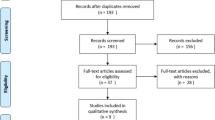Abstract
The aim of this study was to critically analyse the various outcome measures available for assessing wrist and hand function. To this end, an extensive literature search was performed on Medline, PubMed and the Science Citation Index, focusing on terms associated with the method of development of the outcome measures item generation, item reduction, validity, reliability, internal consistency and their strengths and weaknesses. The most commonly used outcome measures described in literature were the DASH score (disability of shoulder, arm and hand questionnaire), the PRWE score (patient-rated wrist evaluation questionnaire), the Brigham and Women's carpal tunnel questionnaire and the Gartland and Werley score. Our study provides very useful evidence to suggest that the PRWE score is the most responsive instrument for evaluating the outcome in patients with distal radius fractures, while the DASH score is the best instrument for evaluating patients with disorders involving multiple joints of the upper limb. The Brigham and Women's score is a disease-specific outcome instrument for carpal tunnel syndrome; it has been validated and demonstrated to show good responsiveness and reliability in evaluating outcome in patients with carpal tunnel release. The Gartland and Werley score, although the most commonly described instrument in the literature for evaluating outcome after wrist surgery, has not been validated so to date.
Résumé
Le but de ce travail est d’analyser de façon critique les différents scores fonctions du poignet et de la main. Une analyse importante de la littérature a été réalisée sur Medline, PubMed et l’Index Science Citation. Cette analyse a été complète prenant en compte les différents scores. La méthode de mesure la plus habituelle a été le score DASH pour les lésions de l’ épaule, du bras et de la main, le score PRWE (pour le poignet), celui de Brigham pour le canal carpien et surtout le poignet, le score de Gartland et celui de Werley. Notre étude permet de mettre en évidence que le score le plus adapté pour les fractures de l’extrémité distale du radius est le score PRWE. Le score DASH est le meilleur instrument pour mesurer les atteintes multiples des articulations des membres supérieurs. Le score de Brigham est spécialement adapté au syndrome du canal carpien, le score de Gartland et Werley est le score le plus habituellement utilisé dans la littérature pour évaluer la chirurgie du poignet.
Similar content being viewed by others
References
Bland JM, Altman DG (1986) Statistical methods for assessing agreement between two methods of clinical measurement. Lancet 1:307–310
Beaton DE, Katz JN, Fossel AH et al (2001) Measuring the whole or the parts? Validity, reliability, and responsiveness of the DASH outcome measure in different regions of the upper extremity. J Hand Ther 14:128–142
Bergner M, Bobbitt RA, Carter WB et al (1981) The sickness impact profile: development and final revision of a health status measure. Med Care 19:787–805
Gartland JJ Jr, Werley CW (1951) Evaluation of healed Colles’ fracture. J Bone Joint Surg Am 33:895–907
Gay RE, Amadio PC et al (2003) Comparative responsiveness of the Disabilities of the arm ,shoulder and hand, the carpal tunnel questionnaire, and the SF-36 to clinical change after carpal tunnel release. J Hand Surg [Am] 28:251–254
Gummesson C, Atroshi I, Ekdahl C (2003) The disabilities of the arm, shoulder and hand (DASH) outcome questionnaire: longitudinal construct validity and measuring self-rated health change after surgery. BMC Musculoskeletal Disorders 12:349–362
Hudak PL, Amadio PC, Bombardier C (1996) Development of an upper extremity outcome measure: the DASH. Am J Int Med 29:602–608
Karnezis IA, Fragkiadakis EG (2002) Association between objective clinical variables and patient rated disability of the wrist. J Bone Joint Surg Br 84:967–970
Levine DW, Simmons PB, Koris MJ et al (1993) A self administered questionnaire for the assessment of severity of symptoms and functional status in carpal tunnel syndrome. J Bone Joint Surg Am 75:1585–1991, Nov
Lucas GL, Sachtjen KM (1981) An analysis of hand function in patients with Colles’ fracture treated by rush rod fixation. Clin Orthop 155:172–179
MacDermid JC, Richards RS, Donner A, Bellamy N, Roth JH (2000) Responsiveness of SF-36, DASH and PRWE and physical impairments in evaluating recovery after distal radius fracture. J Hand Surg [Am] 25:330–340
MacDermid JC, Turgeon T, Richards RS, Beadle M, Roth JH (1998) Patient rating of wrist pain and disability: a reliable and valid measurement tool. J Orthop Trauma 12:77–86
Sarmiento A, Pratt GW, Berry NC, Sinclair WF (1975) Colles’ fracture: functional bracing in supination. J Bone Joint Surg Am 57:311–317
Ware JE Jr, Kosinski M, Bayliss MS et al. (1995) Comparison of methods for the scoring and statistical analysis of SF-36 health profile and summary measures: summary of results from the Medical Outcomes Study. Med Care 33 [Suppl 4]:264–279
Author information
Authors and Affiliations
Corresponding author
Rights and permissions
About this article
Cite this article
Changulani, M., Okonkwo, U., Keswani, T. et al. Outcome evaluation measures for wrist and hand – which one to choose?. International Orthopaedics (SICO 32, 1–6 (2008). https://doi.org/10.1007/s00264-007-0368-z
Received:
Accepted:
Published:
Issue Date:
DOI: https://doi.org/10.1007/s00264-007-0368-z




